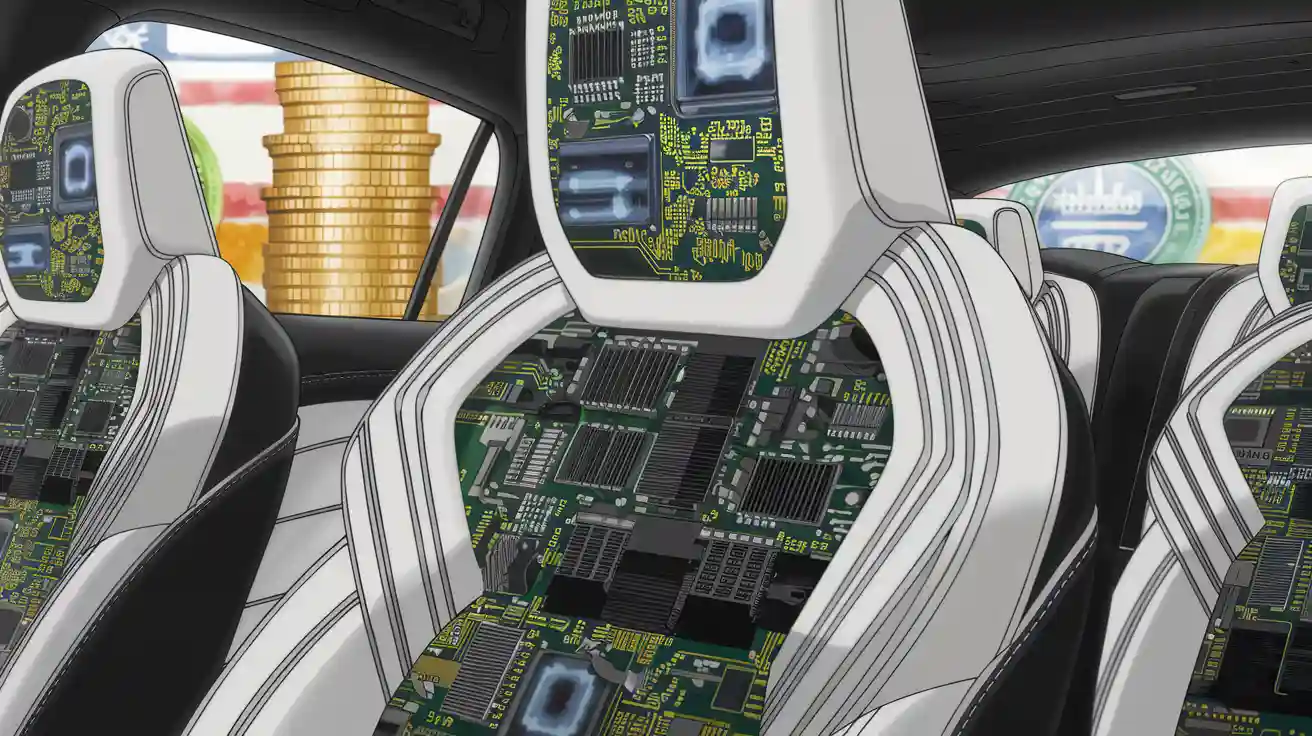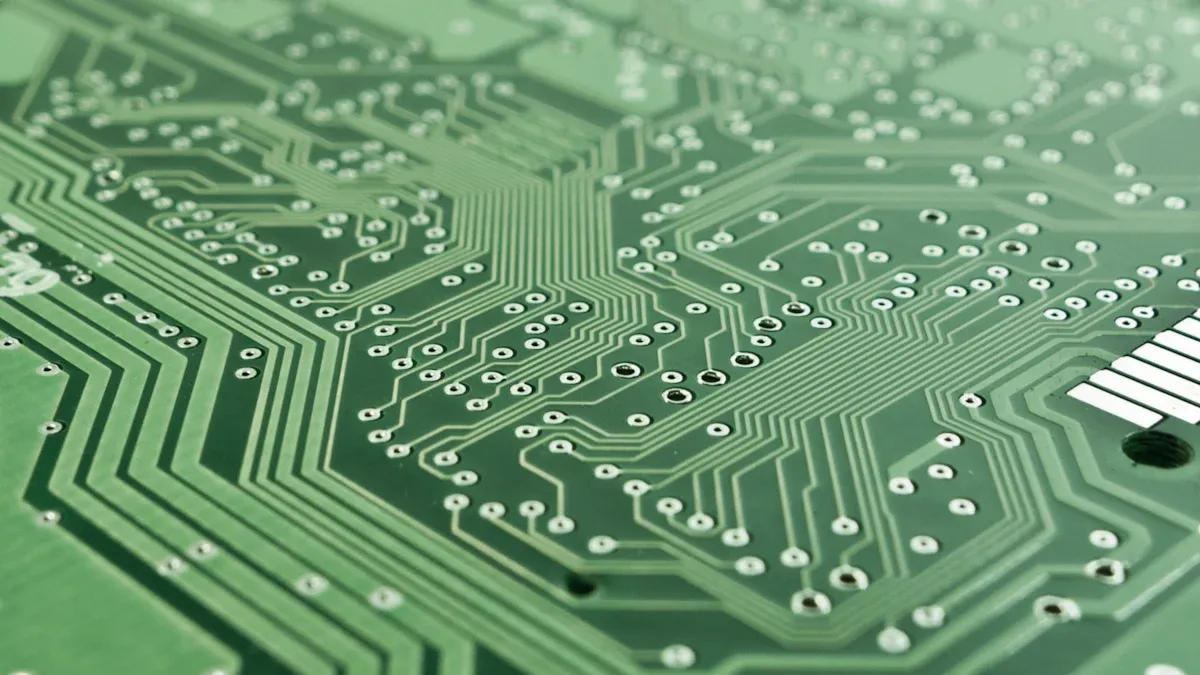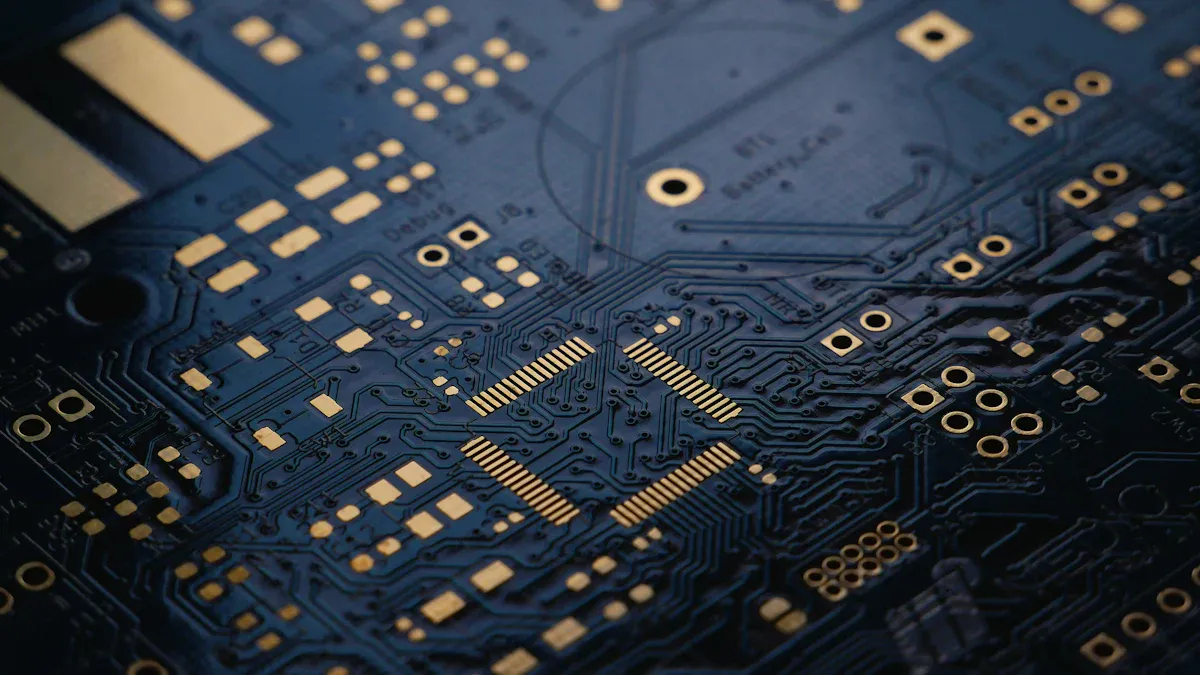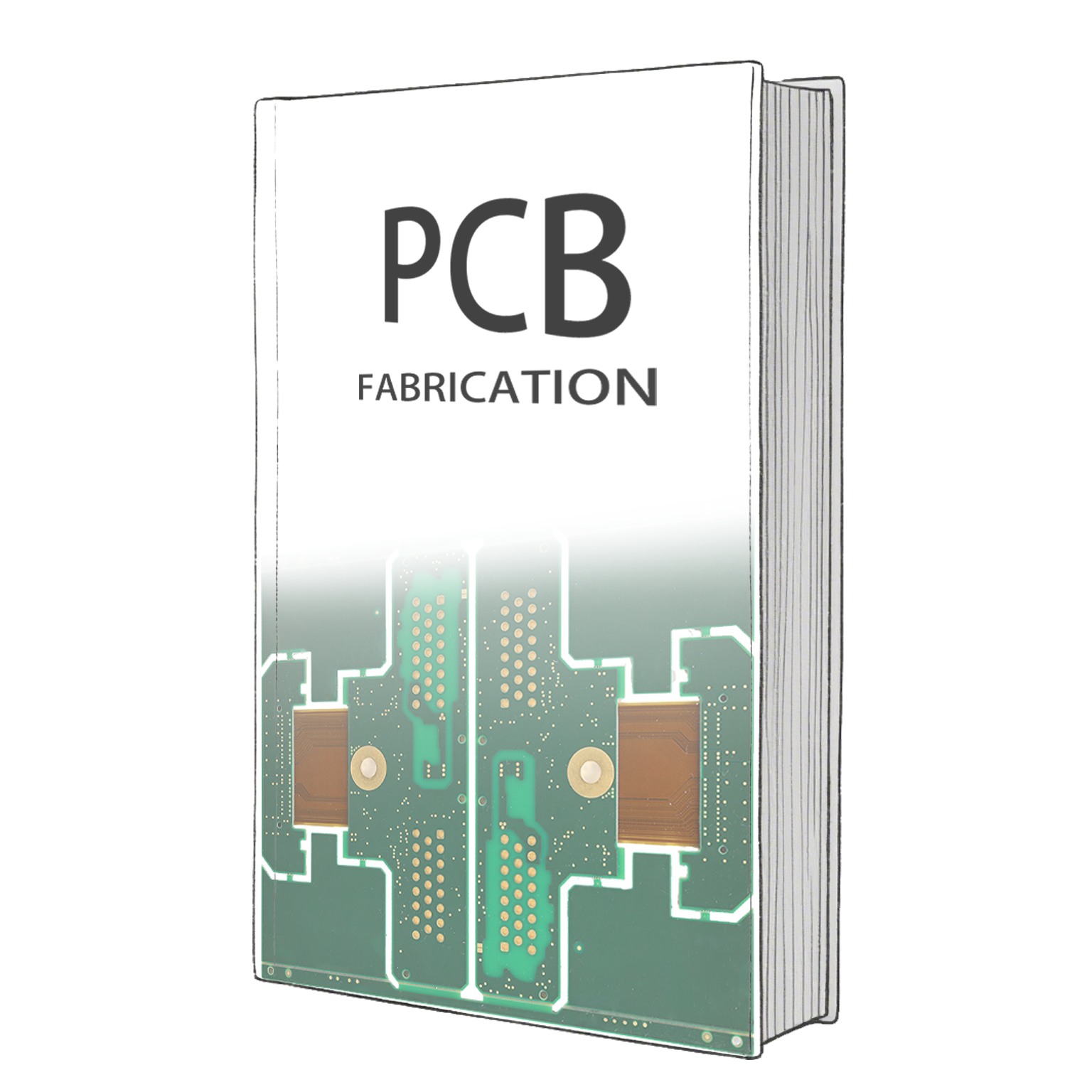Saved 200,000 RMB for the mass production of Honda car seat circuit boards
Saving 200,000 RMB in the mass production of Honda car seat circuit PCBs is achievable with a strategic approach. Cost-efficient production is essential in the automotive sector, where even minor savings can lead to significant competitive advantages. For example, adopting zonal-based electrical architectures can cut material costs by 10% to 20%, while streamlining engineering processes by up to 30%. With the automotive industry contributing 7% to Europe’s GDP and supporting nearly 14 million jobs, efficiency isn’t just a goal—it’s a necessity. You can achieve these savings by focusing on smarter designs, better materials, and advanced technologies.
Key Takeaways
- Make circuit designs simpler to improve how they are made. Easier designs save time, cost less, and work better.
- Use the same parts to cut costs. Common parts are easy to find and cheaper in large amounts.
- Use fewer PCB layers to save money. Fewer layers make things simpler and cheaper but still work well.
- Use machines to make production faster. Machines make fewer mistakes, work quickly, and lower labor costs.
- Check quality carefully to catch problems early. Finding issues early reduces waste and keeps customers happy.
Optimize Honda Car Seat Circuit PCB Design
Simplify Circuit Design for Manufacturing Efficiency
Simplifying the circuit design is one of the most effective ways to enhance manufacturing efficiency and reduce costs. By focusing on streamlined layouts, you can eliminate unnecessary complexities that often lead to higher production expenses. A well-optimized design not only speeds up the assembly process but also improves product reliability and performance. For instance, reducing redundant pathways in the circuit can lower the chances of defects during production.
Tip: Collaborate with your engineering team to identify areas where the design can be simplified without compromising functionality. This approach ensures a balance between cost savings and product quality.
Here’s a breakdown of the benefits of simplifying circuit designs:
| Benefit | Description |
|---|---|
| Reduced assembly time and costs | Faster assembly processes lower production costs. |
| Improved product quality and reliability | Fewer defects lead to higher reliability. |
| Simplified manufacturing processes | Streamlined designs make production easier. |
| Enhanced product performance | Better designs improve functionality. |
| Decreased time-to-market | Efficient designs enable quicker launches. |
By adopting these strategies, you can significantly cut costs while maintaining the high standards expected in electrical component development.
Use Standardized Components to Reduce Costs
Using standardized components is a proven method to lower production costs. When you rely on commonly available parts, you benefit from economies of scale. Suppliers often offer better pricing for bulk orders of standardized components, which can directly impact your bottom line. Additionally, standardized parts simplify the assembly process, reducing the time and labor required for production.
Note: Standardized components are not only cost-effective but also easier to source, ensuring a steady supply chain for your production needs.
For Honda car seat circuit PCBs, choosing standardized resistors, capacitors, and connectors can streamline the manufacturing process. This approach minimizes the need for custom parts, which are often more expensive and harder to procure. By integrating standardized components into your design, you can achieve both cost efficiency and operational reliability.
Minimize PCB Layers for Cost Savings
Reducing the number of PCB layers is another critical strategy for saving costs in mass production. Multi-layer PCBs are more expensive to manufacture due to their complexity. By minimizing the layers, you can significantly lower production expenses while maintaining the required functionality.
The following table illustrates the correlation between PCB complexity and cost:
| PCB Type | Complexity | Cost Factor |
|---|---|---|
| Single-Sided | Simplest | Lowest |
| Double-Sided | Moderate | Medium |
| Multi-Layer (4-16 Layers) | Complex | High |
| Multi-Layer (16+ Layers) | Highly Complex | Very High |
For Honda car seat circuit PCBs, opting for double-sided or low-layer multi-layer designs can strike the right balance between performance and cost. This approach not only reduces material costs but also simplifies the manufacturing process, leading to faster production cycles.
Tip: Work closely with your design team to evaluate whether certain functionalities can be achieved with fewer layers. This small adjustment can lead to substantial savings in the long run.
By implementing these strategies—simplifying circuit designs, using standardized components, and minimizing PCB layers—you can achieve significant cost reductions in the production of Honda car seat circuit PCBs. These steps not only save money but also enhance the overall efficiency and reliability of your manufacturing process.
Source Materials for Honda Car Seat Circuit PCB Production
Partner with Suppliers Offering Competitive Pricing
Choosing the right suppliers is critical for reducing costs in the production of Honda car seat circuit PCBs. You should evaluate potential partners based on their pricing, reliability, and quality. Start by requesting quotes from multiple vendors and comparing their pricing structures. This approach ensures you identify the most cost-effective options without compromising on quality.
Tip: Investigate the quality control measures of each supplier. Ensure they conduct incoming inspections and maintain transparency in their testing procedures.
Here’s a quick guide to help you assess suppliers effectively:
- Request quotes from at least three vendors.
- Compare their pricing structures and terms.
- Evaluate the quality of components they offer.
| Key Factors | Description |
|---|---|
| Supplier Performance | Evaluates the reliability and quality of the supplier. |
| Risk Assessment | Identifies potential risks associated with the supplier. |
| Hidden Cost Drivers | Uncovers any additional costs that may not be immediately apparent. |
| Business Practices | Assesses the supplier’s operational values and practices. |
| Competitive Advantage | Determines if the supplier offers any unique benefits. |
By partnering with suppliers offering competitive pricing, you can significantly reduce material costs while ensuring a steady supply of high-quality components.
Leverage Bulk Purchasing for Discounts
Bulk purchasing is a proven strategy to lower costs in electrical component development. When you buy materials in large quantities, suppliers often provide discounts that can lead to substantial savings. This approach not only reduces the per-unit cost but also ensures you have enough inventory to avoid production delays.
Note: Before committing to bulk purchases, confirm the supplier’s ability to deliver consistent quality across large orders.
For Honda car seat circuit PCBs, consider bulk ordering standardized components like resistors and capacitors. These parts are commonly used and easy to store, making them ideal for bulk procurement. By leveraging this strategy, you can optimize your budget and streamline your production process.
Negotiate Contracts to Maximize Savings
Negotiating contracts with suppliers is another effective way to cut costs. You should aim to secure long-term agreements that include favorable terms, such as volume discounts or fixed pricing. These contracts provide financial predictability and protect you from market fluctuations.
Tip: Highlight your commitment to a long-term partnership during negotiations. Suppliers are more likely to offer better terms when they see the potential for ongoing business.
Focus on these key areas during contract discussions:
- Payment terms: Negotiate extended payment periods to improve cash flow.
- Delivery schedules: Ensure timely deliveries to avoid production delays.
- Additional perks: Request value-added services, such as free shipping or priority support.
By negotiating effectively, you can maximize savings and build strong relationships with your suppliers, ensuring the success of your Honda car seat circuit PCB production.
Enhance Manufacturing Processes for Honda Car Seat Circuit PCBs
Automate Production Lines for Efficiency
Automating production lines is one of the most effective ways to boost efficiency in manufacturing Honda car seat circuit PCBs. Automation reduces human error, speeds up production, and ensures consistent quality. By integrating advanced machinery and software, you can streamline operations and achieve significant cost savings.
Automation allows you to monitor key metrics that highlight operational improvements. For example:
| Metric | Description |
|---|---|
| Overall Equipment Effectiveness (OEE) | Combines availability, performance, and quality into a single indicator for operational effectiveness. |
| Cycle Time Analysis | Evaluates the time taken to complete a production cycle, highlighting efficiency improvements. |
| Throughput Rate Measurement | Measures the amount of product produced in a given time frame, indicating production capacity. |
| Downtime Tracking | Monitors periods when production is halted, essential for identifying inefficiencies. |
Real-time monitoring enhances operational efficiency, while data analytics supports data-driven decision-making. Consistent methods for calculating line efficiency provide a stable base for improvements. To maximize the benefits of automation, analyze collected data to identify factors affecting line efficiency, determine the optimum number of personnel on the production line, and assess the functioning, age, and maintenance of machines.
Tip: Invest in IoT-powered sensors to track machine performance and detect issues before they cause downtime. This proactive approach ensures uninterrupted production and higher output rates.
Implement Rigorous Quality Control Systems
Quality control is essential for maintaining high standards in PCB manufacturing. Rigorous systems help you detect defects early, reduce waste, and ensure customer satisfaction. By implementing automated inspection tools, you can achieve consistent quality without increasing labor costs.
Focus on these key areas to enhance quality control:
- Use automated optical inspection (AOI) systems to identify defects in soldering and component placement.
- Establish clear benchmarks for acceptable quality levels and train your team to meet these standards.
- Conduct regular audits to ensure compliance with industry regulations and customer requirements.
Better process control and waste minimization through data analytics lead to direct cost reductions. For example, identifying areas of material overuse can help you optimize inventory management and reduce expenses. Upgrading to energy-efficient machinery further lowers operational costs while improving output rates.
Note: A strong quality control system not only saves money but also builds trust with your customers, ensuring repeat business and long-term success.
Optimize Production Scheduling to Reduce Downtime
Optimizing production scheduling is a powerful way to minimize downtime and improve efficiency. Poor scheduling often leads to bottlenecks, idle machinery, and missed deadlines. By using advanced scheduling software, you can allocate resources effectively and ensure smooth operations.
IoT-powered smart sensors can reduce unplanned downtime by approximately 30% or more. This reduction results in higher productivity, lower costs, and enhanced ability to meet customer commitments. Real-world cases demonstrate how optimized scheduling leads to better resource utilization and faster turnaround times.
To achieve optimal scheduling, focus on these strategies:
- Analyze historical production data to identify patterns and predict future needs.
- Prioritize maintenance tasks during non-peak hours to avoid disruptions.
- Coordinate with suppliers to ensure timely delivery of materials.
Tip: Use predictive analytics to anticipate potential delays and adjust schedules accordingly. This proactive approach keeps your production line running smoothly and minimizes costly interruptions.
By automating production lines, implementing rigorous quality control systems, and optimizing production scheduling, you can significantly enhance manufacturing processes for Honda car seat circuit PCBs. These strategies not only reduce costs but also improve efficiency, ensuring your production remains competitive in the automotive industry.
Adopt Cost-Saving Technologies in PCB Manufacturing
Utilize Advanced PCB Design and Manufacturing Software
Adopting advanced PCB design and manufacturing software can revolutionize your production process. These tools streamline operations, reduce errors, and cut costs, making them indispensable for producing high-quality seat heater circuit boards. By leveraging design software and simulation tools, you can minimize costly redesigns and prototypes, ensuring a smoother path from concept to production.
Here’s how advanced software can benefit your operations:
| Strategy | Benefit Description |
|---|---|
| Design Software and Simulation Tools | Minimizes errors, reducing costly redesigns and prototypes. |
| Production Efficiency | Reduces labor costs and turnaround times, although initial investments are needed. |
| Automated Procurement and Inventory Management | Lowers overhead costs and minimizes waste. |
| Adoption of Industry 4.0 Practices | Leads to significant efficiencies and cost savings over time. |
For seat heater circuit boards, these tools also enhance precision, ensuring that every component fits perfectly. Advanced manufacturing software further optimizes production cycle times, defect rates, and on-time delivery rates. By integrating these technologies, you can achieve faster turnaround times and higher customer satisfaction.
Tip: Invest in AI-enabled systems to analyze real-time data. These systems can identify potential issues before they escalate, saving you time and money.
Implement Eco-Friendly Practices to Reduce Waste
Eco-friendly practices not only reduce waste but also lower production costs. For seat heater circuit boards, selecting sustainable substrate materials and recycling integrated circuits (ICs) can significantly minimize environmental harm. A life cycle assessment (LCA) highlights the importance of these practices, showing reductions in Global Warming Potential (GWP) and Acidification Potential (AP).
By adopting green manufacturing methods, you can achieve the following:
- Reduce material waste through efficient design and production processes.
- Lower energy consumption by using energy-efficient machinery.
- Enhance your brand image by aligning with environmentally conscious values.
For example, recycling ICs not only reduces waste but also cuts costs by reusing valuable materials. Implementing these practices ensures compliance with environmental regulations while maintaining profitability.
Note: Eco-friendly manufacturing doesn’t just benefit the planet—it also attracts eco-conscious customers, giving you a competitive edge in the market.
By utilizing advanced software and adopting eco-friendly practices, you can transform your PCB manufacturing process. These strategies not only save costs but also improve efficiency and sustainability, ensuring your seat heater circuit boards meet the highest standards.
Saving 200,000 RMB in mass production starts with actionable strategies. You can simplify circuit designs, use standardized components, and minimize PCB layers to cut costs. Partnering with competitive suppliers, leveraging bulk purchases, and negotiating contracts further reduce expenses. Automating production lines, enhancing quality control, and optimizing scheduling boost efficiency.
Tip: Combine advanced software and eco-friendly practices to maximize savings and sustainability.
By implementing these strategies, you achieve cost-efficient production without compromising quality. Take action today to transform your manufacturing process and gain a competitive edge.
FAQ
What is the most effective way to reduce PCB production costs?
Focus on simplifying designs, using standardized components, and minimizing PCB layers. These steps lower material and manufacturing expenses while maintaining quality.
Tip: Collaborate with your design team to identify unnecessary complexities and streamline the production process.
How can I ensure consistent quality in mass production?
Implement rigorous quality control systems, such as automated optical inspection (AOI) tools. These systems detect defects early and reduce waste.
Note: Strong quality control builds trust with customers and ensures repeat business.
Why should I consider eco-friendly practices in PCB manufacturing?
Eco-friendly practices reduce waste, lower energy costs, and enhance your brand image. Recycling materials like ICs also cuts expenses.
♻️ Sustainable manufacturing attracts eco-conscious customers and ensures compliance with environmental regulations.
How does automation improve manufacturing efficiency?
Automation reduces human error, speeds up production, and ensures consistent quality. It also lowers labor costs and boosts output.
Tip: Use IoT-powered sensors to monitor machine performance and prevent downtime.
Can advanced software really save money in PCB production?
Yes! Advanced design and manufacturing software minimizes errors, reduces redesigns, and optimizes production cycles. These tools streamline operations and cut costs.
💡 Invest in AI-enabled systems to analyze real-time data and prevent costly issues.




















